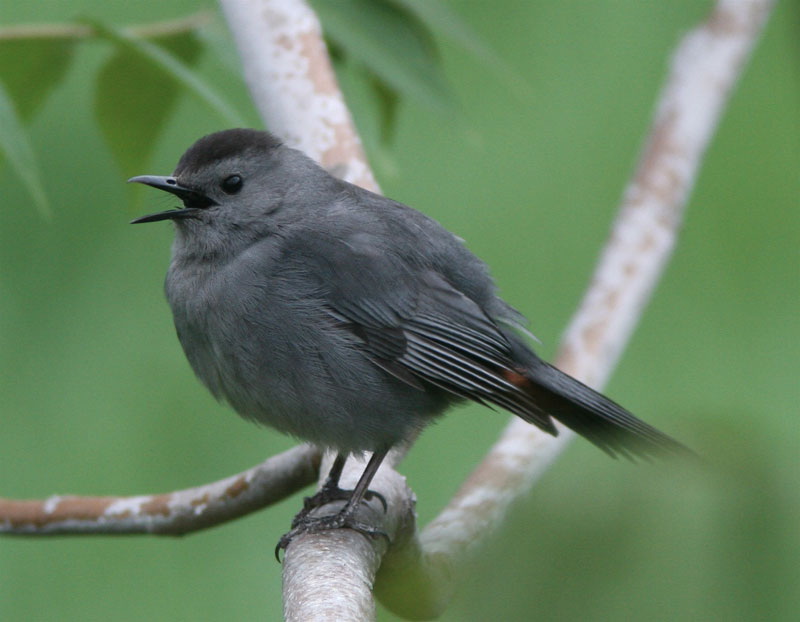 Grey catbird
Grey catbird
Unmanned aerial vehicles (UAVs, also known as drones) are rapidly finding a place in ecological research. In a new study from The Auk: Ornithological Advances, researchers from Gettysburg College test this technology for monitoring songbird populations. Although the method currently has some pitfalls, it has the potential to become an important scientific tool.
Surveying bird populations is crucial for environmental management, but it is inherently challenging. Some types of terrain are difficult to access, and human observers introduce the element of human bias.
The use of audio recordings made by UAVs has the potential to combat both of these challenges, as hard-to-reach sites can be flown over and multiple people can analyze the resulting recordings.
Andrew Wilson of Gettysburg College and his colleagues tested the feasibility of combining bioacoustic monitoring and UAVs to survey songbird populations (see YouTube abstract). The team used fishing line to suspend a lightweight audio recorder 8 m below a low-cost consumer drone, a quadcopter called the DJI Phantom 2. They first conducted trial runs on local college athletic fields to help refine their methods, and then field-tested the technology in real bird surveys on Pennsylvania State Game Lands.
“We counted birds at 51 locations using standard point counts (me counting birds for five minutes) and flew drones with recorders over the same locations on the same day,” says Wilson. “We found that, for most species, counts obtained from recorders mounted on the UAV were very similar to those of a highly experienced field ornithologist.”
A few bird species were undercounted by the UAV technique. Mourning doves (Zenaida macroura), for instance, have an extremely low-frequency call that was masked by the sound of the drone, and gray catbirds (Dumetella carolinensis) occurred at such high densities that distinguishing the calls of individual birds in the recordings was difficult.
This experiment has revealed the promise of UAV technology, but also uncovered several hurdles to its regular use in the field. Continued refinement of UAV technology, such as the development of quieter drones, would help solve many of the potential problems with the technique.
Another potentially critical issue is whether the presence of UAVs affects songbird behavior, especially their propensity to sing.
“Initial indications are that drones do not impact bird behavior; birds continue to sing when drones are hovering 60 m overhead, but we’ll be looking into that in more detail this summer,” says Wilson.
Wilson and his colleagues hope their demonstration will inspire other researchers to try out similar techniques using a variety of UAVs and recorders in different types of habitats and geographic areas.
“I have a vision that within a few years, quieter UAVs will be surveying large areas of terrain within just a few hours, and that the technology will have advanced to the point where all bird vocalizations are automatically identified and plotted in real-time,” says Wilson. “It is vital, however, that such technology would be affordable to non-governmental organizations and researchers with limited funds, because they do lots of the important conservation work.”
Wilson and his colleagues hope that automated bird surveying with UAVs will eventually be used as an additional technique to augment the work of well-trained field surveyors.
“Surveying birds by ear is an impressive skill that encourages ornithologists to spend time out in the field getting to know their study species and their habitats,” says Wilson. “We need to be wary about relying too heavily on technology, because that reliance could erode natural history skills and reduce an emotional connection with birds and the environment.”
Originally published by PLOS under CC-BY licence

Rate and Review
Rate this article
Review this article
Log into OpenLearn to leave reviews and join in the conversation.
Article reviews